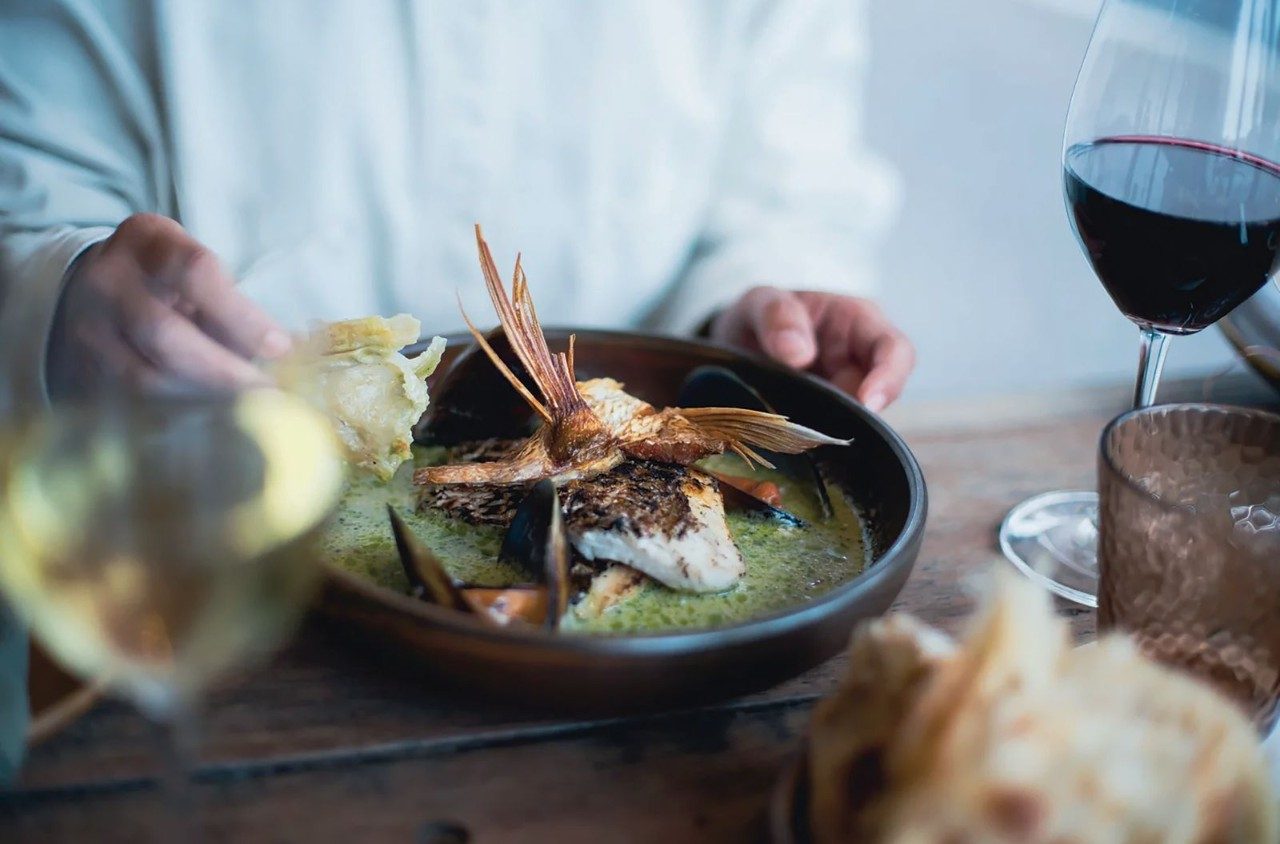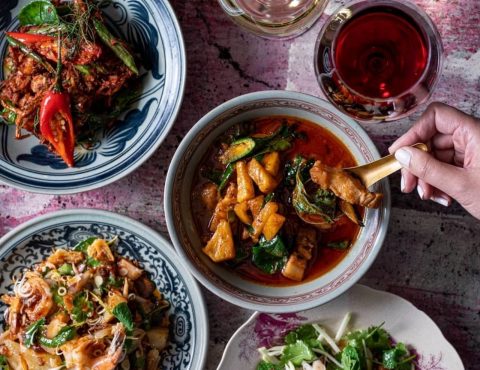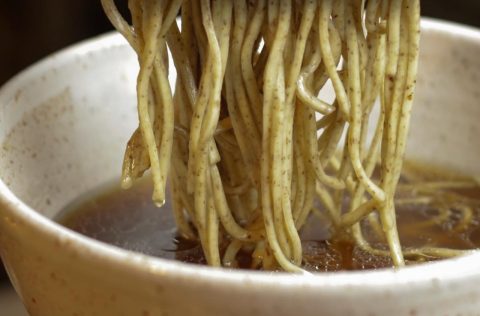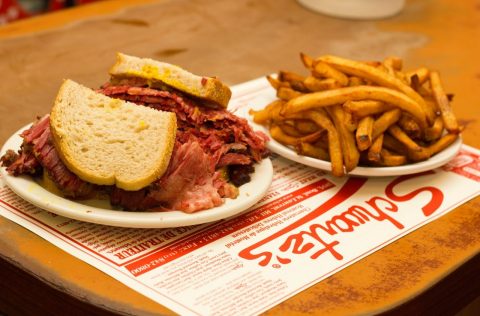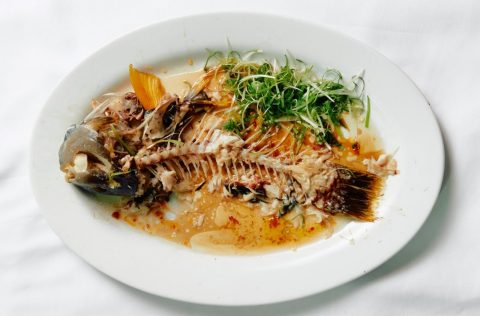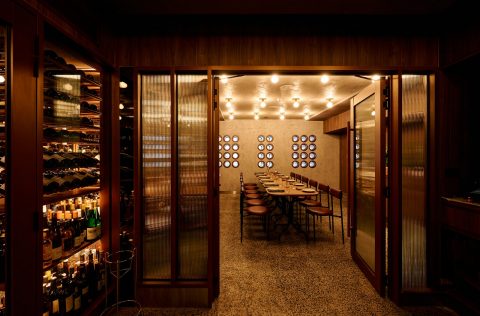Where to Find the Best Steak in Australia
A good piece of steak with a well-chosen condiment is a reason to leave the house. And Australian chefs are excelling at quality beef done well.
Some chefs wander their wine cellars for inspiration, blowing dust off bottles and inspecting the labels to kickstart ideas for the season. Neil Perry browses his meat cellar. “Every week, I go to our ageing room,” he says of the chilled warehouse in suburban Sydney (Warrane) where up to $90,000 worth of beef is hung from hooks and racked on shelves. He’s seeking the perfect additions to the menu at Margaret, the Double Bay restaurant that was recently named second-best steak restaurant in the world, powering Sydney to the title of Best Steak Destination.
“I look to see how the meat is going and harvest different cuts week by week,” says Perry. Whether it’s Wagyu or Friesian, pasture-fed or grain-finished, loin or rib, everything is from trusted producers and deemed ready when it best expresses its true, beefy nature. “We’re looking for the flavour of the beef to come through,” says Perry. “Readiness is about how nice, firm and dry it is: we like it dehydrated enough to give that intensity.”
Each offering is described on Margaret’s daily menu by weight, age, feed, breed, cut and ageing technique so going out “for steak” has turned into going out for wood-grilled 500-gram dry-aged grass-fed 36-months-old Hereford bone-in sirloin. “The Australian diner has become more discerning,” says Perry. “People are eating beef in its natural form and looking for condiments and sides rather than sauces.”
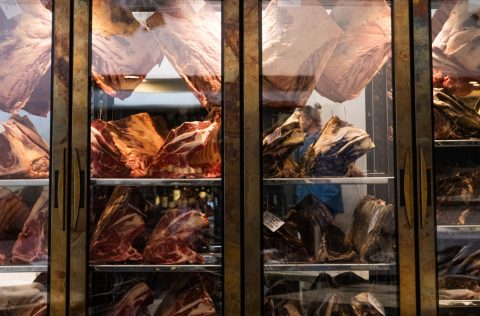
Chef and restaurateur Stacey Conner estimates she’s cooked about 300,000 steaks in an almost 25-year career. “There’s an obsession there,” says the co-owner of Humble on Duke at Sunshine Beach on Queensland’s Sunshine Coast, where there’s always a premium steak on the menu. “Sourcing a great product, treating it the best possible way you can, cooking it perfectly for someone, slicing it: I don’t need much more than that as a chef. It’s so satisfying to me.”
Over the decades, she’s seen diners become more adventurous. “We’re having an interesting moment with meat. Before, it was all eye fillets; now there’s tri-tip, skirt, Wagyu crossbreeds and people are happy to pay for quality. They’re more open to different cuts, breeds and cooking methods.” They’re also more informed. “They want to know where their beef is coming from, that it’s been treated well, whether it’s grass or grain. They have more knowledge and they have faith in you as a chef that you’ll care about all that, too.”
In Melbourne (Naarm), hotelier Rabih Yanni also finds his customers are keen to know the beef backstory. “Guests are more engaged, especially on grass versus grain: there’s a lot more awareness around pasture and provenance,” says the owner of Botanical Hotel (above) in South Yarra, who ran his first steak-focused restaurant 20 years ago. Knowing and communicating information about beef is a sign of quality and care. “There isn’t a place worth your time that doesn’t list provenance,” he says. Sharing knowledge builds trust, which then plays into trying new things. “Twenty years ago, more people were asking for their meat well done,” says Yanni. “Now, we have six cuts on the menu, plus two specials, and guests say they’ll have it however the chef recommends. It’s about relationships: ours with the producers and the guests with us.”
More steak specialists to try around the country...
Image credit: Nikki To
Firedoor, Surry Hills, NSW
1/9Lennox Hastie’s den-like grill in Sydney’s Surry Hills has been a hot ticket since it opened in 2015. Fire is more than a cooking medium here, it becomes another ingredient. Two ovens are on rotation: one roars at up to 1600°C, with meat cooked over glowing embers; the other is a warm roasting chamber for slow-cooking, breads and pastries.
20 Chapel, Marrickville, NSW
2/9In Sydney’s Marrickville, longtime Rockpool Bar & Grill chef Corey Costelloe has created the neighbourhood version of the city institution. He takes complete carcasses from Wagyu farmer David Blackmore and works his way through them, focusing on butchery skills and chef craft as well as prizing the whole animal. Everything is cooked over fire, with rarely seen cuts offered as specials, such as “spider” steak, a small, textured cut from inside the hip.
Arkhé, Norwood, SA
3/9Everything is cooked over fire at Jake Kellie’s Arkhé in Adelaide’s Norwood but the heart of the menu is wood-grilled Wagyu from Mayura Station on South Australia’s Limestone Coast. Browse the meat-ageing cabinets where the T-bones have been dipped in tallow and the tomahawks are coated in a mixture of smoked chocolate and Laphroaig whisky. “We get an amazing sweetness and richness through the meat,” says Kellie.
Image credit: Dom Cherry
6Head, Perth CBD, WA
4/9The name refers to an old origin story about cattle’s arrival in Australia. It’s said that six “head” were brought from the Cape of Good Hope in South Africa to Australia, where they managed to elude their convict shepherd, only to successfully breed in the wild. The kitchen at this Perth fine-diner is framed by theatre-style curtains and steaks are carved at the table, adding to the sense of culinary drama. The menu highlights producers, breeds and feed, with a good range of cuts in portions ranging from “business lunch” to “fit for a king”.
Agnes, Fortitude Valley, Qld
5/9Of course, Agnes in Brisbane’s Fortitude Valley is a restaurant but dining here feels like worshipping in a temple to fire. There’s no gas or electric cooking, with the kitchen built around a huge hearth that warms the restaurant and helps guests slow down and relate to beautiful, seasonal ingredients. Different types of timber – ironbark, cherry and olive, perhaps – are used to give a different finish to meats and vegetables. “We’ve had good results from resting leaner secondary cuts like flank high above the grill over smoking applewood to slowly come up to temperature, before searing and finishing over ironbark coals,” says chef Ben Williamson.
Berbeo Bar & Grill, Docklands, Vic
6/9Juan Berbeo comes from a long line of barbecue experts in his native Colombia and has grilled for up to 5000 people at a time at events and festivals. The scale is smaller at his business lunch-friendly Docklands restaurant but the passion and experience shows. Steaks are sourced from small local producer Sher Wagyu, meaning keen prices and a good variety of cuts. Build out your meal with satisfying Colombian starters and sides such as empañadas, housemade chorizo and excellent cassava chips.
Image credit: Pete Dillon
Society, Melbourne CBD, Vic
7/9Located in the heart of the city’s 80 Collins precinct, glamorous Society gets most attention for its extravagant caviar and lobster offerings but wood-grilled steak is also a feature, especially the larger-format cuts for sharing. Think 500-gram chateaubriand au poivre or 1.2-kilogram rib eye with mustard jus. Save room for a selection from the multi-level cakes trolley.
Image credit: Tourism Tasmania
Kauri Bistro, Smithton, Tas
8/9Near Stanley at the north-western tip of the island, Tall Timbers Hotel is a resort with great access to four-wheel driving and wilderness experiences. The onsite Kauri Bistro showcases Cape Grim beef, grown nearby in what’s widely regarded as the cleanest air in the world. The grill stays busy sizzling a variety of cuts and there are well-priced Tassie reds to accompany your steak.


